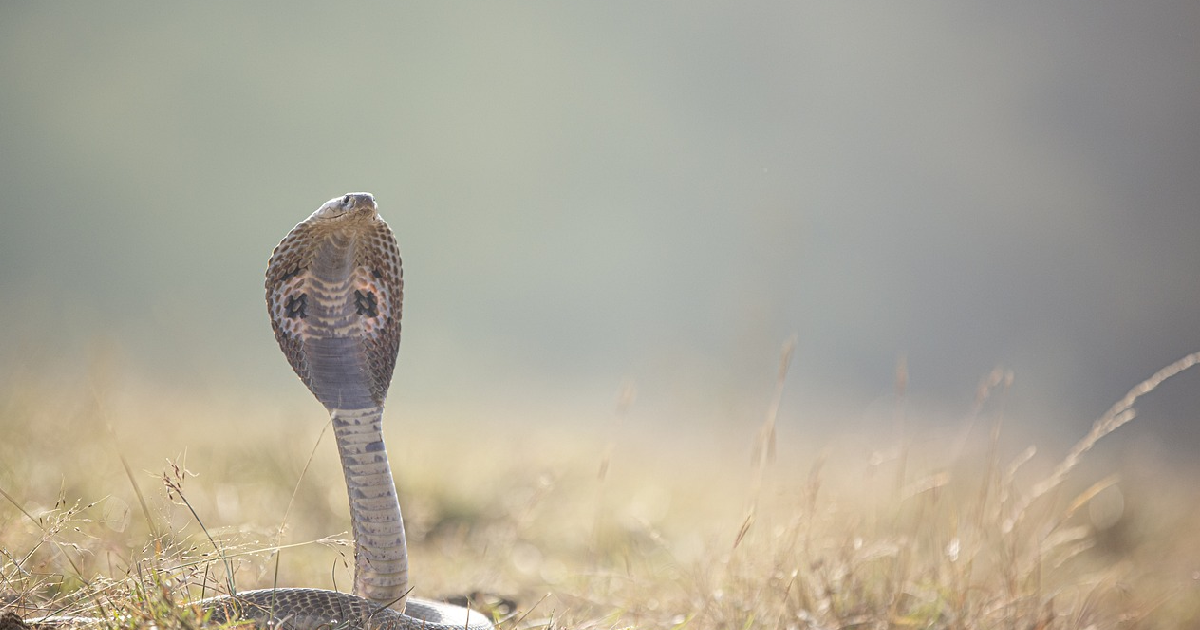Introduction
Imagine a creature that can pause its life in the face of scarcity, a survivalist capable of outlasting some of the harshest conditions on Earth. Snakes, those often misunderstood beings, can go without food for astonishingly long periods. This capability isn’t just a quirky fact; it’s a critical survival mechanism that highlights the resilience and adaptability of these fascinating reptiles.
But just how long can snakes go without food? This question isn’t merely of academic interest—it’s crucial for pet owners, wildlife enthusiasts, and conservationists who strive to understand and protect these creatures. Whether you’re curious about the natural world or concerned about caring for a pet snake, understanding the limits of a snake’s fasting can provide deeper insights into their health, behavior, and environment.
This post will delve into the fascinating world of snake fasting. We’ll explore the factors influencing how long they can survive without a meal and what happens to their bodies during these prolonged periods. Join us as we uncover some remarkable insights into one of nature’s most efficient survivors, demonstrating why this topic is not just about enduring hunger but about unraveling the mysteries of biological resilience.
How Long Can Snakes Go Without Food?

Snakes are remarkable creatures, capable of surviving extended periods without food. The general fasting duration of snakes varies widely depending on several factors. On average, many snakes can go without food for about one to two months. However, this period can extend to several months under certain conditions.
Factors influencing a snake’s fasting period include its species, age, health, and environment. Different species have adapted to their unique habitats and prey availability, significantly impacting how long they can endure without food. Younger snakes typically require more frequent feeding than adults, as they are still growing and developing. A snake’s overall health also plays a critical role, with healthier snakes able to withstand more extended fasting periods than those that are sick or malnourished.
Environmental conditions such as temperature and humidity also affect a snake’s fasting ability. In colder environments or during brumation (a period of dormancy similar to hibernation), snakes can significantly reduce their metabolic rate, enabling them to survive without food for extended periods. Conversely, their metabolism speeds up in warmer conditions, necessitating more frequent feeding.
Different snake species exhibit varying fasting capabilities. For example, ball pythons are known for their ability to go without food for several months, especially during the breeding season. In contrast, species like the garter snake may need to eat more frequently.
To illustrate these differences, consider the following table:
| Species | Average Fasting Duration |
|---|---|
| Ball Python | 4-6 months |
| Corn Snake | 2-3 months |
| King Cobra | 1-2 months |
| Garter Snake | 1-2 weeks |
| Boa Constrictor | 2-4 months |
Understanding these variations is crucial for snake owners and enthusiasts alike. It ensures that pet snakes are adequately cared for and their natural behaviors are respected in the wild. By recognizing the limits and needs of different species, we can better appreciate the resilience and adaptability that define these fascinating reptiles.
What Factors Influence a Snake’s Fasting Ability?

Several factors influence a snake’s ability to fast. These factors include species variation, age and health, and environmental conditions. Each factor determines how long a snake can go without food.
Species Variation
Species variation significantly impacts a snake’s fasting ability. Constrictors, such as pythons and boas, tend to have slower metabolisms. This allows them to survive longer without food than other species.
Venomous snakes, like cobras and vipers, generally have higher metabolic rates and require more frequent meals. These differences in metabolic rates are crucial for understanding each species’ unique fasting capabilities.
For instance, pythons can endure months without food, whereas cobras may need to eat every few weeks. The table below highlights these differences:
| Species | Fasting Duration |
|---|---|
| Python | 4-6 months |
| Boa Constrictor | 2-4 months |
| King Cobra | 1-2 months |
| Rattlesnake | 2-3 months |
Age and Health of the Snake
The age and health of a snake are also crucial factors. Younger snakes typically need to eat more frequently, as their growing bodies require more nutrients to support development.
In contrast, adult snakes can go longer without food. They have fully developed metabolisms and can conserve energy more effectively. A snake in good health can endure fasting better than one sick or stressed.
A healthy adult snake might manage several months without food, while a juvenile or ill snake might only last a few weeks. Proper health care for pet snakes is essential to support their fasting periods.
Environmental Conditions
Environmental conditions, such as habitat and temperature, influence a snake’s fasting ability. Snakes in colder climates or those undergoing brumation can lower their metabolic rates, allowing them to survive without food for extended periods.
During brumation, a snake’s body conserves energy by reducing activity. This state of dormancy is similar to hibernation in mammals. Snakes have higher metabolic rates in warmer climates and need to eat more often.
Habitat also affects fasting. Snakes in environments with abundant prey can feed regularly, while those in areas with scarce food sources have adapted to endure longer fasting periods.
Understanding these factors helps us provide better care for pet snakes and appreciate their survival strategies in the wild. By recognizing the interplay of species, age, health, and environment, we can better support and protect these remarkable reptiles.
How Do Snakes Survive Without Food for So Long?

Snakes have developed remarkable adaptations to survive prolonged periods without food. Their survival strategies involve a combination of metabolic adaptations, energy conservation, and physiological changes, which work together to allow snakes to endure extended fasting periods effectively.
Metabolic Adaptations
One of the primary ways snakes survive without food is by reducing their metabolic rate. Snakes can lower their metabolism by as much as 70% when food is scarce. This drastic reduction helps them conserve energy, enabling them to survive longer without a meal.
Metabolic adaptations vary among species. Constrictors, for example, have inherently slower metabolisms than venomous snakes, which allows them to endure longer fasting periods naturally.
During fasting, snakes’ bodies prioritize essential functions. They limit energy expenditure on non-essential activities. This metabolic adjustment is crucial for their survival during extended periods without food.
Energy Conservation Strategies
In addition to metabolic adaptations, snakes employ various energy conservation strategies. One key strategy is reducing their physical activity. To conserve energy, snakes become less active and spend more time in hiding.
By minimizing movement, snakes reduce their overall energy expenditure. This behavior is particularly evident during brumation, a state of dormancy in colder months. During brumation, snakes remain inactive for extended periods, significantly lowering their energy needs.
Another energy conservation strategy involves optimizing body temperature. Snakes regulate their body temperature by seeking out environments that help them conserve heat. This thermoregulation minimizes the energy required to maintain essential bodily functions.
Physiological Changes
Physiological changes also play a vital role in a snake’s ability to survive without food. During fasting, snakes undergo several internal adjustments to adapt to the lack of nutrients. One significant change is the reduction in the size of their digestive organs.
The digestive system of a fasting snake shrinks to conserve energy. This reduction helps minimize the energy required for maintenance and digestion. When food becomes available again, the digestive organs rapidly return to their normal size to process the meal.
Additionally, snakes mobilize stored energy reserves. They rely on fat reserves to sustain themselves during fasting periods. This stored energy provides the necessary fuel to maintain essential bodily functions.
In summary, snakes survive extended periods without food through metabolic adaptations, energy conservation strategies, and physiological changes. These mechanisms allow them to endure harsh conditions and scarce food availability. Understanding these adaptations highlights these fascinating reptiles’ incredible resilience and survival skills.
What Happens When a Snake Starves?

When a snake starves, it undergoes several physiological and behavioral changes. These changes can be observed both in the short and long term. Understanding these effects is crucial for recognizing and preventing starvation in pet snakes and conservation efforts in the wild.
Short-term Effects
In the short term, a starving snake exhibits noticeable changes in behavior. It may become less active and spend more time hiding. This reduction in activity helps conserve energy.
Physically, the snake may appear thinner as it utilizes fat reserves for energy. The skin might start to look loose or baggy. These initial changes are the body’s immediate response to the lack of food.
Behaviorally, a snake might also become more aggressive or restless as it seeks food. This change in demeanor is a survival instinct driven by hunger. Recognizing these early signs is crucial for preventing further deterioration.
Long-term Effects
Prolonged fasting leads to more severe health issues for snakes. Over time, using fat reserves can lead to muscle wasting. The snake becomes visibly emaciated as it loses muscle mass.
Extended starvation can compromise the snake’s immune system, making it more susceptible to infections and diseases. A weakened immune system significantly impacts the snake’s overall survival and health.
Another long-term effect is organ damage. Organs like the liver and kidneys can suffer from a lack of nutrients. This damage can be irreversible and fatal if not addressed promptly.
Signs of Starvation
Identifying the signs of starvation in snakes is essential for their care. One of the most obvious signs is significant weight loss. The snake appears unusually thin, with prominent bones and sunken eyes.
Another sign is changes in the skin. The skin may become dry and flaky, and it might also appear loose due to the loss of underlying fat and muscle.
Behavioral changes are also indicative of starvation. A snake may become sluggish and less responsive. Conversely, it might display increased aggression or agitation as it desperately searches for food.
In conclusion, understanding starvation’s short-term and long-term effects on snakes is vital. It helps in early detection and intervention, ensuring the well-being of these fascinating reptiles. Proper care and attention can prevent the detrimental consequences of prolonged fasting and promote a healthy, thriving snake.
Conclusion
Understanding how long snakes can go without food reveals much about their remarkable adaptability and survival strategies. We’ve explored the various factors influencing a snake’s fasting ability, from species variation and age to environmental conditions and physiological changes. Recognizing the signs and effects of starvation in snakes highlights the importance of proper care and attention for pet snakes and those in the wild.
For pet owners, knowing your snake’s fasting capabilities is crucial for ensuring its health and well-being. Monitoring their behavior and physical condition can prevent severe health issues. Wildlife enthusiasts can better appreciate these reptiles’ resilience and adaptability by understanding their natural fasting periods.
When caring for or observing snakes, always seek professional advice when needed. Early intervention can significantly impact a snake’s health and longevity. This knowledge helps provide better care and fosters a more profound respect for these fascinating creatures.
In closing, snakes’ survival strategies offer a unique perspective on life’s incredible adaptability. Their ability to endure prolonged fasting is a testament to nature’s ingenuity. Reflecting on these strategies reminds us of the resilience and resourcefulness inherent in the natural world. It challenges us to appreciate and protect these remarkable beings whose existence continues to captivate and inspire us.
FAQs
1. How long can snakes survive without food?
Snakes can survive without food for varying lengths depending on their species, age, and health. On average, many snakes can go without food for one to two months. Some species, like ball pythons, can last up to six months without eating under certain conditions.
2. What happens if a snake doesn’t eat for a month?
If a snake doesn’t eat for a month, it will rely on its fat reserves for energy. Initially, there may be little visible change, but the snake will lose weight and muscle mass over time. Behavioral changes, such as reduced activity and increased aggression, may also occur.
3. How often do snakes eat?
The feeding frequency of snakes varies by species, age, and health. Generally, adult snakes eat every one to two weeks, while younger snakes require more frequent meals, often once a week. It’s essential to follow species-specific guidelines for feeding.
4. How long should I wait if my snake doesn’t eat?
If your snake doesn’t eat, observe it for signs of stress or illness. It’s normal for snakes to refuse food occasionally, especially during shedding or brumation. However, consult a veterinarian if your snake hasn’t eaten for over two months or shows signs of distress.
5. How long can snakes go without water?
Depending on environmental conditions, snakes can go without water for about one to two weeks. Dehydration can be severe for snakes, so providing constant access to fresh water is crucial.
6. How long can a snake survive without food and water?
A snake can survive without food and water for about one to two weeks. Beyond this period, dehydration becomes a critical issue, often leading to severe health problems or death.
7. How long can snakes go without food before they die?
The duration snakes can go without food before dying varies widely. Some species can survive several months without food, while others may only last a few weeks. Species, age, health, and environmental conditions significantly influence this period.
8. How long can a baby snake go without eating?
Baby snakes generally need to eat more frequently than adults. They can typically go without food for about one to two weeks. Prolonged fasting in baby snakes can lead to rapid health deterioration.
9. How long can corn snakes go without food?
Corn snakes typically go without food for up to two to three months. However, their fasting ability depends on their health and environmental conditions. Regular monitoring is essential to ensure they remain healthy during fasting periods.
10. How long can a ball python go without eating?
Ball pythons are known for their ability to endure long fasting periods. They can go without food for up to six months, especially during brumation or breeding seasons. However, they should be monitored for signs of health issues during extended fasting.
11. How long can humans go without food?
Humans can survive without food for about three weeks, though this period can vary based on factors such as hydration, health, and environmental conditions. Unlike snakes, humans do not have the same metabolic adaptations for prolonged fasting.
























